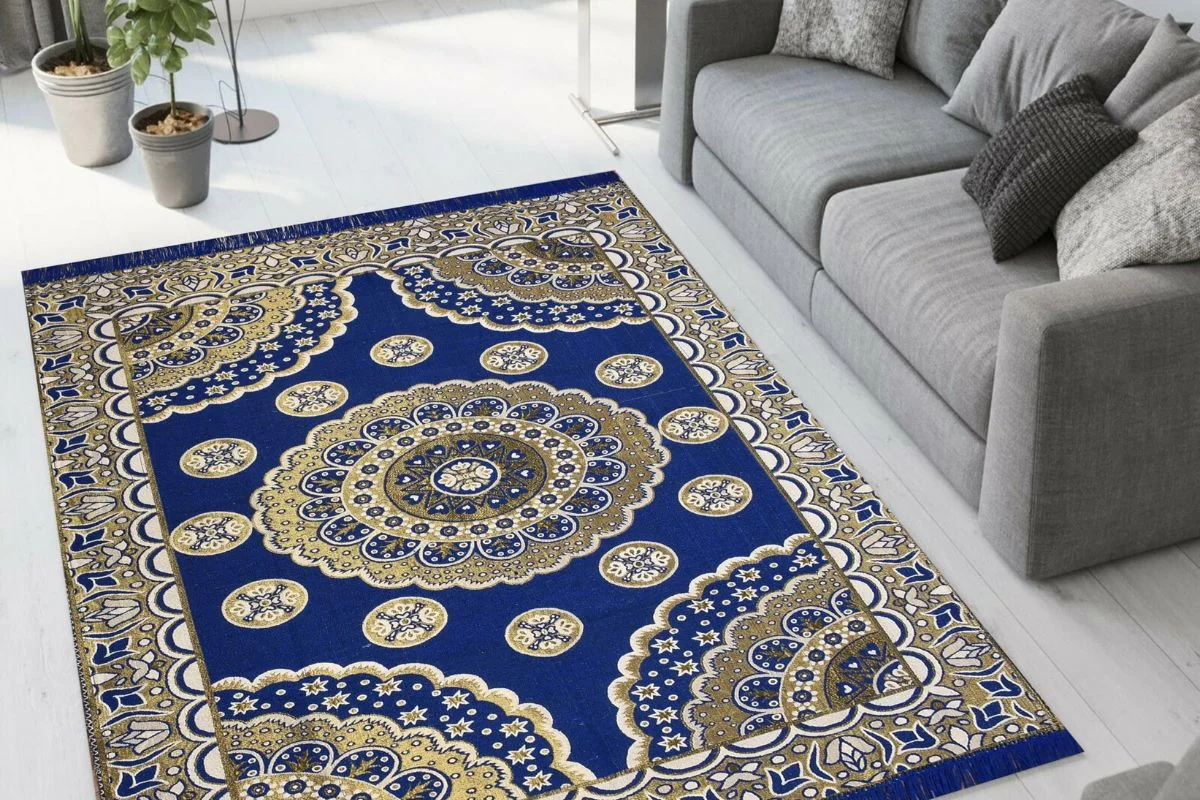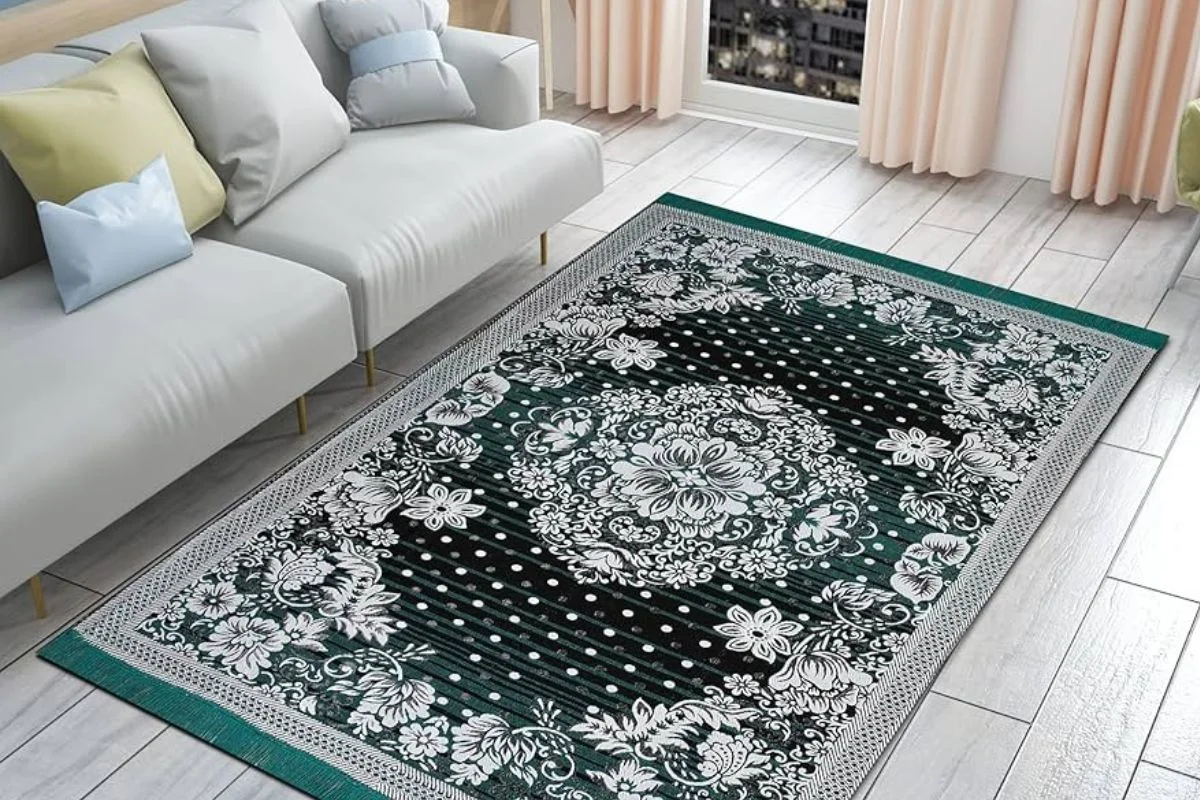Imagine walking into a spacious room—everything seems perfect, from the lighting to the decor—until you speak, and your voice echoes like you’re in a cave. Sound bouncing off hard surfaces in large rooms can create an uncomfortable, echoey effect, making the space feel cold and less inviting. This is where carpets come in as more than just a decorative element.
In this post, we’ll explore how carpets play a vital role in improving acoustics in large spaces, diving into the science behind their sound-absorbing qualities. We’ll also cover the practical benefits for different environments, from home theaters to open offices. Get ready to discover how adding a soft layer underfoot can create a quieter, cozier, and more harmonious atmosphere.
Understanding Sound Reflection and Absorption
In large rooms, sound waves bounce off hard surfaces like walls, floors, and ceilings, creating echoes that can be distracting and unpleasant. This reflection results in reverberation, a lingering of sound that can make voices hard to understand and music sound cluttered. Softer materials, like carpets, play an essential role in reducing these echoes by absorbing rather than reflecting sound waves. The fibers in carpets trap and dampen sound, helping to create a warmer, more intimate environment. In rooms where sound clarity is critical—like meeting spaces or living rooms—carpets provide an effective solution to manage and control sound.
The Science Behind Carpets as Sound Absorbers
Carpets are effective sound absorbers due to their fibrous structure. Each fiber within a carpet traps tiny air pockets that help to catch and dissipate sound waves. Additionally, carpets with thicker padding or higher pile height offer even better acoustic properties, as their denser materials provide greater sound insulation. Carpets absorb both airborne sounds (such as conversations) and impact sounds (like footsteps or dropped items), helping to keep noise levels down. This dual capability makes carpets particularly effective in reducing unwanted noise, creating a quieter and more peaceful atmosphere in large rooms and open spaces.
Benefits of Improved Acoustics in Different Settings
Carpets improve acoustics in diverse settings by reducing noise and enhancing comfort. In homes, carpets help minimize echoes in open-concept spaces, making living areas feel cozy and less “empty” in sound. In workplaces, carpets reduce distractions from background noise, aiding concentration and enhancing productivity in open offices. Hotels, libraries, and museums also benefit from carpeted areas, where a quieter ambiance adds to guests’ comfort and relaxation. Large rooms used for specific functions—like theaters or conference halls—also benefit acoustically, with carpeted floors enabling clearer audio experiences by reducing noise interference and unwanted reverberations.
Types of Carpets Best Suited for Acoustic Control
Certain carpet types are better suited for sound absorption. Wool carpets, for example, are dense, durable, and offer excellent sound-dampening qualities, while nylon carpets are highly durable with moderate acoustic properties, ideal for busy spaces. Carpets with a high pile (thicker, longer fibers) tend to absorb more sound than low-pile carpets, which have shorter fibers. Additionally, denser carpets with tighter weave patterns are more effective at reducing sound reflections. Choosing the right carpet material and pile height based on room function, traffic, and desired sound control can make a significant difference in achieving the ideal acoustic balance.
Additional Acoustic Enhancements with Carpets
Adding carpet underlays, or padding, is another way to enhance a carpet’s sound-absorbing abilities. Carpet padding acts as an extra layer of insulation, creating even more space for sound to dissipate and absorb. Some homeowners or businesses may choose to layer area rugs on top of wall-to-wall carpet to further reduce noise in rooms where high acoustic control is needed. Rugs can add extra cushioning, especially in rooms with heavy foot traffic, while also providing an opportunity for stylish layering. With additional layers, carpets effectively absorb a wider range of sound frequencies, creating a more acoustically balanced space.
Cost-Benefit Analysis of Carpets for Acoustic Purposes
Carpets are often more cost-effective for sound control compared to other acoustic treatments like wall panels, ceiling baffles, or soundproofing foam. While some alternatives can be pricier, carpets provide dual benefits: they improve aesthetics and reduce noise at the same time. Other treatments may be expensive or less visually appealing, while carpets are a practical way to address sound issues without sacrificing style. For homes or businesses needing both comfort and acoustic control, investing in quality carpets often delivers a higher return on investment by creating a serene, professional, or homely feel that complements the space’s design.
Maintenance Tips for Longevity and Performance
Regular maintenance is key to ensuring carpets remain effective at sound absorption over time. Vacuuming regularly helps keep fibers clean and prevents dirt from compacting, which can affect the carpet’s acoustic performance. In high-traffic areas, consider professional deep cleaning every few months to remove embedded dust and allergens that may accumulate. For spaces like offices or hotels, daily upkeep and routine steam cleaning will ensure that carpets remain fresh, fluffy, and sound-absorbing. Proper care keeps carpets looking great and functioning well, helping them continue to improve room acoustics for years to come.
Case Studies or Real-Life Examples
Real-life examples demonstrate the effectiveness of carpets in improving acoustics. In open-concept offices, carpets have been shown to reduce noise distractions, making the environment more conducive to focus. Hotels often choose thick carpeting in hallways to create a quieter, more comfortable atmosphere for guests by absorbing footstep noise and conversations. Residential case studies, such as home theaters, reveal that carpeted floors significantly improve sound clarity by reducing echoes, making movie-watching more immersive. By sharing specific instances where carpets improved acoustic conditions, readers gain a clearer understanding of how carpets can be applied effectively in various spaces.
Environment and Sustainability Considerations
Eco-friendly carpets are increasingly popular for sound control without compromising environmental values. Many carpets now come in sustainable materials like recycled nylon or natural fibers such as jute and wool, which are not only durable but also biodegradable. Environmentally conscious manufacturers also offer carpets with low-VOC emissions, contributing to healthier indoor air quality. Choosing sustainable carpets allows homeowners and businesses to improve acoustics while supporting green practices, minimizing waste, and reducing their carbon footprint. By selecting eco-friendly carpet options, spaces benefit from both sound absorption and a commitment to a healthier planet.









